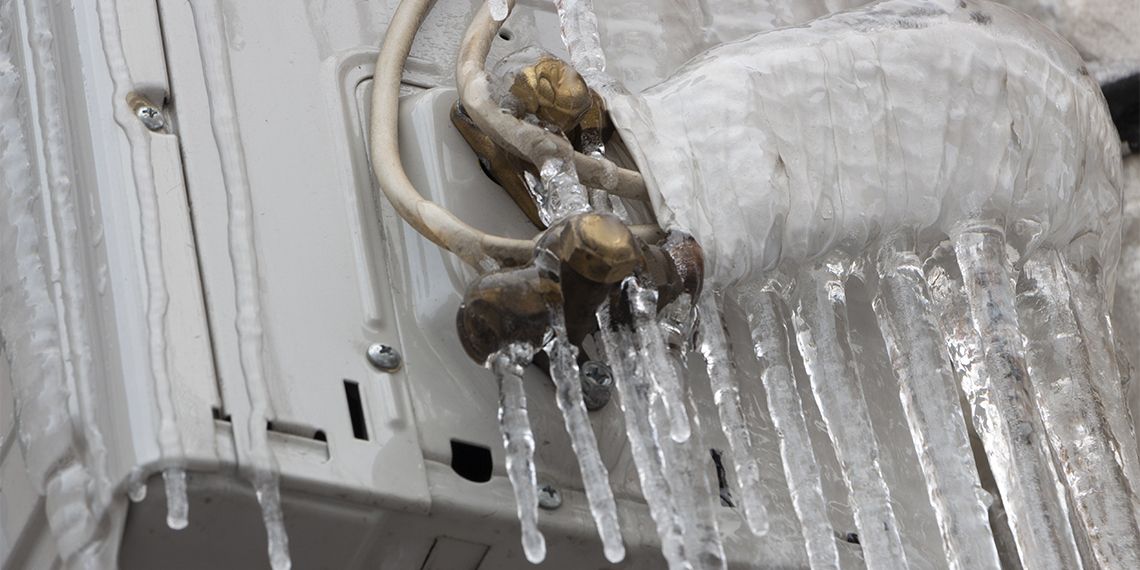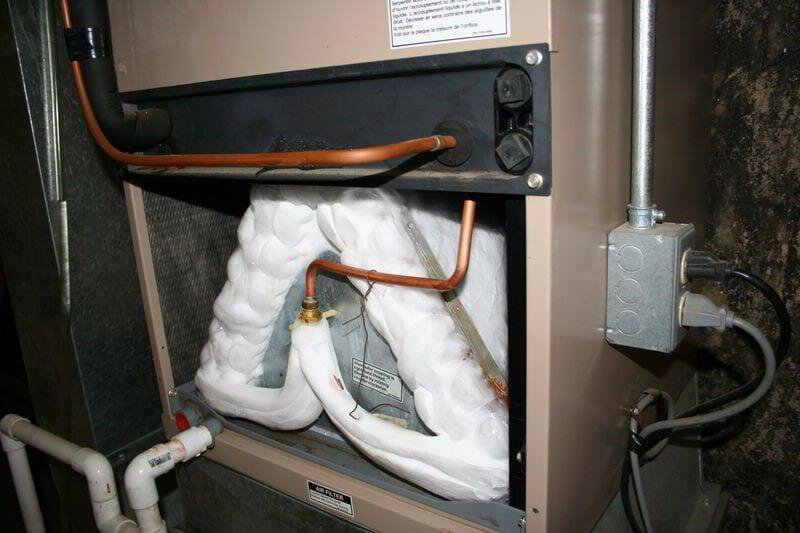How to Deal With a Frozen AC Pipe - Essential Steps for Restoration
How to Deal With a Frozen AC Pipe - Essential Steps for Restoration
Blog Article
What're your beliefs about Why Is Ice On My Outside Air Conditione?

Introduction
Discovering that your AC pipe is iced up can be concerning, especially throughout hot summer season when you depend on your air conditioner the most. Recognizing what to do in such a situation is critical to prevent more damage to your air conditioning system and ensure your comfort indoors.
Understanding the Causes
Several variables can add to the freezing of an air conditioning pipeline. Comprehending these reasons can help you deal with the concern successfully.
Absence of Airflow
One common cause of an icy air conditioner pipeline is inadequate airflow. When the air flow over the evaporator coil is limited, it can trigger the coil to go down below freezing temperature level, bring about ice development on the pipe.
Low Refrigerant Levels
Inadequate cooling agent degrees in your air conditioner system can likewise lead to an icy pipe. Low cooling agent levels can create the pressure in the system to go down, causing the cold of wetness on the evaporator coil.
Winter Conditions
In colder environments, freezing temperatures outside can contribute to the freezing of air conditioner pipelines. If your AC device is not effectively shielded or if there are leaks in the ductwork, chilly air can penetrate the system, triggering the pipeline to freeze.
Dirty Air Filters
Dirty or stopped up air filters can limit airflow in your a/c system, causing numerous problems, consisting of a frozen pipeline. It's essential to change or cleanse your air filters consistently to make sure correct air movement and protect against ice buildup.
Signs of a Frozen A/c Pipe
Recognizing the signs of an icy AC pipeline is essential for prompt activity.
Decreased Airflow
If you observe a significant decline in airflow from your vents, it can indicate a frozen pipeline.
Ice Buildup on the Pipe
Noticeable ice accumulation on the cooling agent line or the evaporator coil is a clear sign of an icy a/c pipeline.
Unusual Sounds from the Unit
Unusual audios, such as hissing or gurgling, originating from your a/c unit can indicate that there's ice present on the pipe.
Immediate Actions to Take
When confronted with a frozen air conditioning pipe, it's necessary to act swiftly to prevent more damages to your cooling system.
Turning off the a/c
The first step is to switch off your air conditioner to avoid the system from running and worsening the issue.
Checking for Blockages
Check the location around the interior unit for any obstructions that may be obstructing air flow, such as furniture or drapes.
Defrosting the Pipe
You can make use of gentle techniques like putting towels soaked in warm water around the frozen pipeline to aid thaw it gradually.
Safety nets
Taking safety nets can assist prevent future incidents of an icy air conditioning pipe.
Regular Maintenance Checks
Arrange normal upkeep checks with a specialist HVAC technician to make sure that your air conditioner system is running effectively.
Changing Air Filters
Consistently change or clean your air filters to stop air flow limitations and maintain ideal performance.
Insulating Exposed Pipes
If your AC pipelines are revealed to cool temperature levels, consider protecting them to stop cold during cold weather.
Looking For Professional Help
If DIY approaches fail to settle the issue or if you're unsure regarding just how to continue, it's best to look for help from a qualified HVAC service technician.
When DIY Methods Fail
If your attempts to thaw the pipeline or address other concerns are not successful, it's time to employ an expert.
Relevance of Hiring a Professional HVAC Technician
A certified HVAC specialist has the experience and tools essential to detect and fix problems with your air conditioner system safely and effectively.
Conclusion
Handling an icy a/c pipe can be an aggravating experience, however recognizing exactly how to respond can help lessen damages and restore comfort to your home. By comprehending the reasons, identifying the indications, and taking prompt action, you can effectively deal with the issue and prevent future occurrences.
Frozen AC Line: Why It Happens & What To Do About It
A frozen AC line can be a rather peculiar sight in a place like Phoenix, Arizona where nothing ever freezes. In this post, we’ll discuss what makes an air conditioner line frozen – and what you can do about it.
Dirty Air Filters
Did you know that you should be cleaning or replacing your air filters on a monthly basis? Failing to do this can result in airflow issues that, in turn, cause your evaporator coils and lines to freeze over. You’ll notice a buildup of ice on both components, although the buildup on your pipes will, of course, be more evident unless you open your air condition up to reveal the coils.
What To Do About It
Give your air filter a good cleaning if it’s reusable. If not, replace the filter outright. Next, switch your air conditioner’s fan setting on and leave it there for 2-3 hours. This will draw warm air in, helping to thaw your evaporator coil. You can also check out this article for some tips on cleaning the coils themselves if you’d like to speed the process up. Before you switch the unit back to its normal state, make sure the supply vents are completely unobstructed and free of dust or other debris.
If you keep having this issue even after replacing your filters regularly, contact a local HVAC repair company and have them inspect your evaporator coil, ductwork, and any other components that may be at fault. If you live in the Phoenix, Arizona area, give American Home Water and Air a call.
Low Refrigerant Levels/Leakage
What To Do About It
Contrary to what air conditioner “recharge” companies often tell their clients about refrigerant, it should never need to be simply refilled. You see, refrigerant runs in what experts refer to as a “closed loop.” Refrigerant really shouldn’t be leaving that loop. If it is, you’ve got a leak.
Paying someone to come and pump more refrigerant into your system (aka “recharge” it) isn’t the solution. Doing that will simply kick the can down the road. Besides, refrigerant leaks can be harmful to the environment and people in your home.
Rather, you need to take care of the leak with the help of a technician. Check out this article for some more information about dealing with air conditioners that are leaking refrigerant. Before you contact a technician, switch your thermostat to the off position. Then, switch the fan setting on and let it run for 2-3 hours so the unit can thaw.
Improper Temperature Setting
Improper temperature settings can also cause a drop in your air conditioner’s pressure. What many people don’t realize is that air conditioners are actually designed to run when temperatures have fallen above roughly 60 degrees Fahrenheit. If you run the unit when it’s cold outside, you’ll run into many issues, including frozen components.

I have been very taken with Have a Frozen AC Line? Here’s How to Fix It and I really hope you enjoyed reading our piece. Sharing is caring. Helping people is fun. Thank-you for going through it.
Call Today Report this page